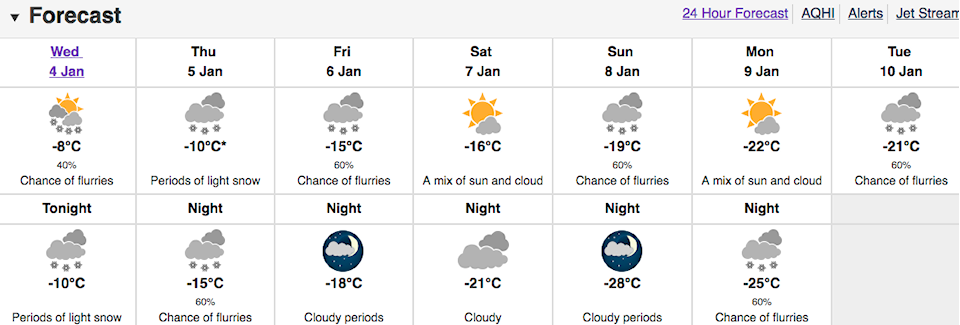Where’s an El Niño when you need one?
Blame the absence of the temperature-modulating climate cycle — at least partly — for this winter’s repeated cold blasts.
The latest is expected to stick around for a couple of weeks, says Environment and Climate Change Canada meteorologist Dan Kulak.
For the next few days, temperatures will drop off with daytime highs on the weekend struggling to claw its way past -20. Monday’s and Tuesday’s highs are expected to reach only -22C and -21C.
Taking a longer view, if it seems like you’ve had to plug in your vehicle more often this year than last —you’re right.
“Last year was an El Niño year, and this year is not like that. We’re getting a lot more cold weather.
“With the lack of El Niño we’re more prone to getting these Arctic air incursions from the north.”
Typically, the ocean warming El Niño means a warmer and drier winter for Central Alberta, although that is not guaranteed. It also tends to create a more consistent weather pattern, says Kulak.
“This year we don’t have that strong forcing mechanism so the weather is more variable.”
A weak to neutral La Niña has followed, which can also produce cooler weather.
So what is the weather office predicting for the next three months? It’s not.
Meteorologists have made three-month predictions for the West Coast, Central and Eastern Canada. However, Alberta and the Prairies are anyone’s guess long term.
The lack of an El Niño and a weak La Niña leaves a “blank forecast” for the next three-month period. Kulak says there simply isn’t enough data to project long-term weather trends.
“We simply have no confidence in what it’s going to be,” he says.
